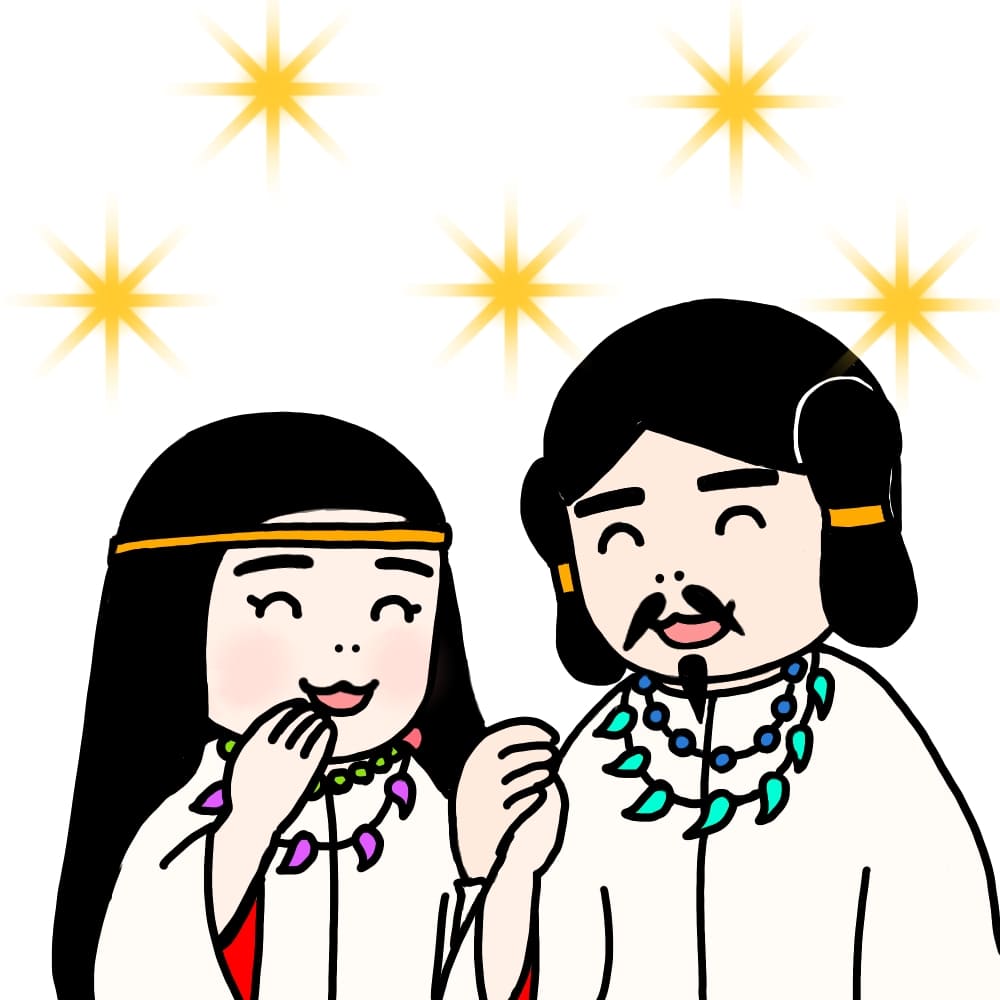Izanagi and Izanami are central figures in Japanese mythology, known as the divine couple who created the islands of Japan. Their story is both fascinating and tragic, filled with themes of love, creation, separation, and the afterlife. But who exactly are these gods? What is the first island they created? And how does the terrifying creature known as Yomotsu-shikome fit into their tale?
In this article, we’ll take a closer look at the story of Izanagi and Izanami, from their union to their separation, and explore some shrines dedicated to them, including the unique Izanami Shrine in Tokushima Prefecture.
Who Are Izanagi and Izanami?

In Japanese mythology, Izanagi and Izanami are considered the gods of creation. Together, they brought forth the islands of Japan and gave birth to numerous deities. Their journey begins when the elder gods task them with creating the world.
Using the sacred spear Amenonuboko (Heavenly Jeweled Spear), they stirred the chaotic waters below. When they lifted the spear, drops of water fell, forming the first island of Japan: Onogoroshima. This marked the beginning of their divine work as creators.
The Tragic Love Story of Izanagi and Izanami

I read the story of Izanagi and Izanami when I was a kid.
It made me so sad.
Their Union and Creation of Japan

After creating Onogoroshima, Izanagi and Izanami descended to the island and performed a marriage ritual by circling a sacred pillar. United as husband and wife, they continued creating the islands of Japan and numerous gods. However, their union took a dark turn when tragedy struck.
The Death of Izanami

While giving birth to various deities representing natural elements like stone, earth, sea, wind, and mountains, Izanami eventually gave birth to Kagutsuchi, the god of fire. However, during childbirth, she suffered severe burns and tragically lost her life. Enraged by this, Izanagi killed Kagutsuchi.
Devastated by the loss of his wife, Izanagi couldn’t accept her death and journeyed to Yomi, the land of the dead, to bring her back.
Izanami’s Transformation and Anger

In Yomi, Izanagi found Izanami, but her appearance had transformed into something horrifying. Izanami became furious when Izanagi saw her decayed form, as she had already eaten the food of Yomi and could never return to the living world. Enraged, she ordered the fearsome Yomotsu-shikome (Hellish Hags of Yomi [Underworld]) and thunder gods to pursue Izanagi.

If you want to know about the Hellish Hags of Yomi (Yomotsu-shikome),
check the article below!
The Role of Yomotsu-shikome

Yomotsu-shikome, the terrifying hags of Yomi, were sent by Izanami to capture Izanagi. In this chase, Izanagi cleverly bought himself time by throwing his comb and hair ornaments. According to legend, the comb turned into bamboo shoots, and the ornaments became grapevines, distracting the hags momentarily.
When Izanagi arrived at Yomotsu Hirasaka (the slope leading to the underworld), he noticed a peach tree growing nearby. Grasping its fruit, he threw the peaches at the pursuing inhabitants of the underworld. The peaches, believed to have a protective and exorcising power, drove the pursuers away. Taking advantage of this, Izanagi sealed the entrance to the underworld with a massive boulder, successfully escaping.
This act symbolized the permanent separation of the two deities.

From beyond the rock, Izanami called out, “I will kill a thousand people from your land every day.” Izanagi replied, “Then I shall ensure that fifteen hundred people are born every day in my land.”
Upon returning to the surface, Izanagi purified himself from the defilement of the underworld by performing a cleansing ritual (misogi) in water. During this purification, three deities were born: Amaterasu Omikami (the sun goddess) emerged when Izanagi washed his left eye, Tsukuyomi no Mikoto (the moon god) appeared when he washed his right eye, and Susanoo no Mikoto (the storm god) was born when he washed his nose. These three children inherited Izanagi’s divine will and became the gods who governed the world.

Izanagi’s kids “Amaterasu” “Susanoo”,
check the article below.
Shrines Dedicated to Izanagi and Izanami

Numerous shrines across Japan are dedicated to Izanagi and Izanami, celebrating their role as creators and protectors. One of the most notable is Izanagi Shrine (伊弉諾神宮/いざなぎじんぐう)on Awaji Island, Hyogo Prefecture, considered the birthplace of Japanese mythology. It is said to be where Izanagi performed purification rituals after returning from Yomi.

This Izanagi shrine is called “one of the oldest shrine in Japan”.
Another famous shrine is Izanami Shrine(伊邪那美神社/いざなみじんじゃ) in Tokushima Prefecture. The only shrine bearing the name of Izanami-no-Mikoto is Izanami Shrine in Tokushima Prefecture.
Other related shrines
・Taga taisha (多賀大社)/ Shiga prefecture
・Eda jinja (江田神社)/ Miyazaki prefecture
・Onokoroshima jinja (おのころ島神社)/ Hyogo prefecture
Conclusion
The story of Izanagi and Izanami offers a glimpse into the rich tapestry of Japanese mythology. From the creation of Japan’s islands to their tragic separation in the land of the dead, their tale is both beautiful and haunting. Visiting the shrines dedicated to them allows you to connect with this mythology on a deeper level.
If you’re interested in Japanese culture and mythology, exploring the story of Izanagi and Izanami is a perfect starting point.

If you are interested in Japanese culture, you may love these games!
Let’s play!

Yes! Let’s play!







Comments